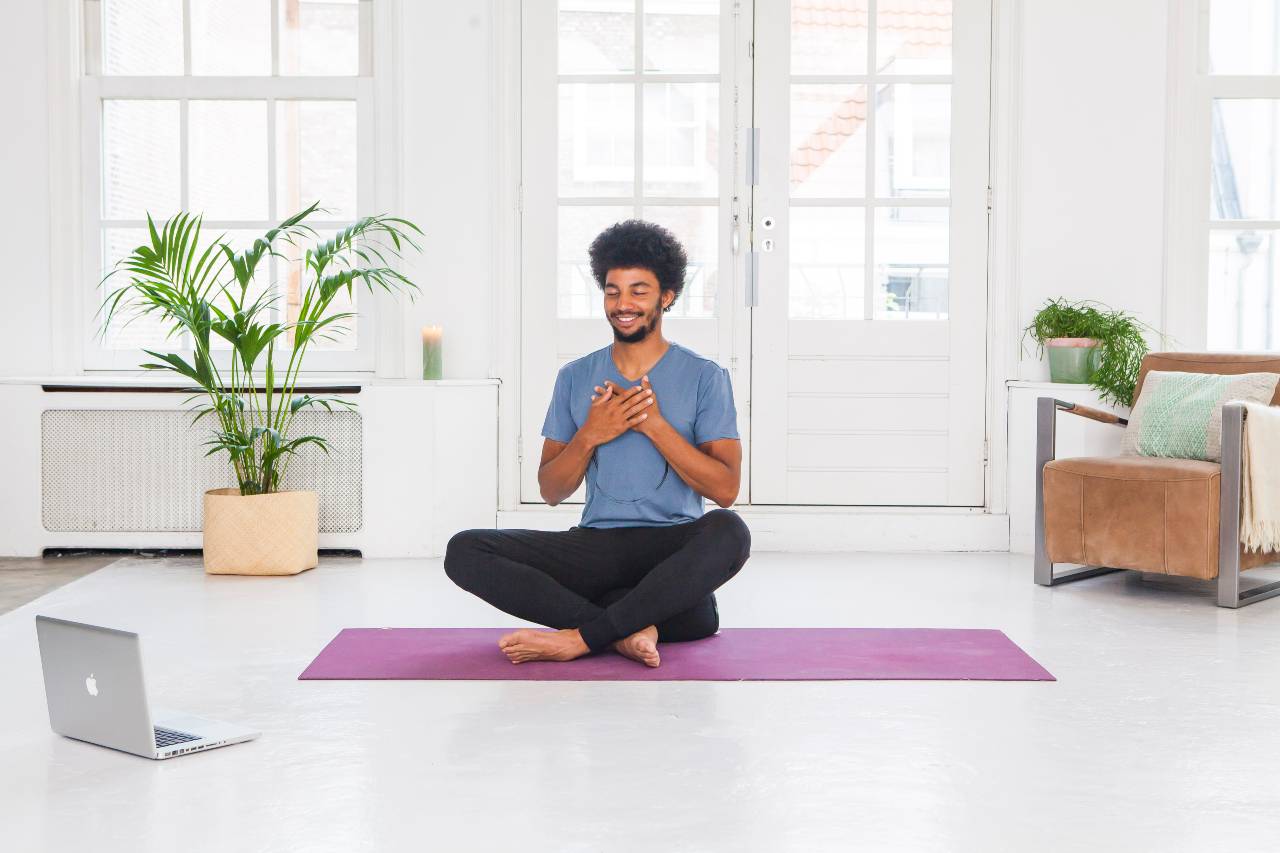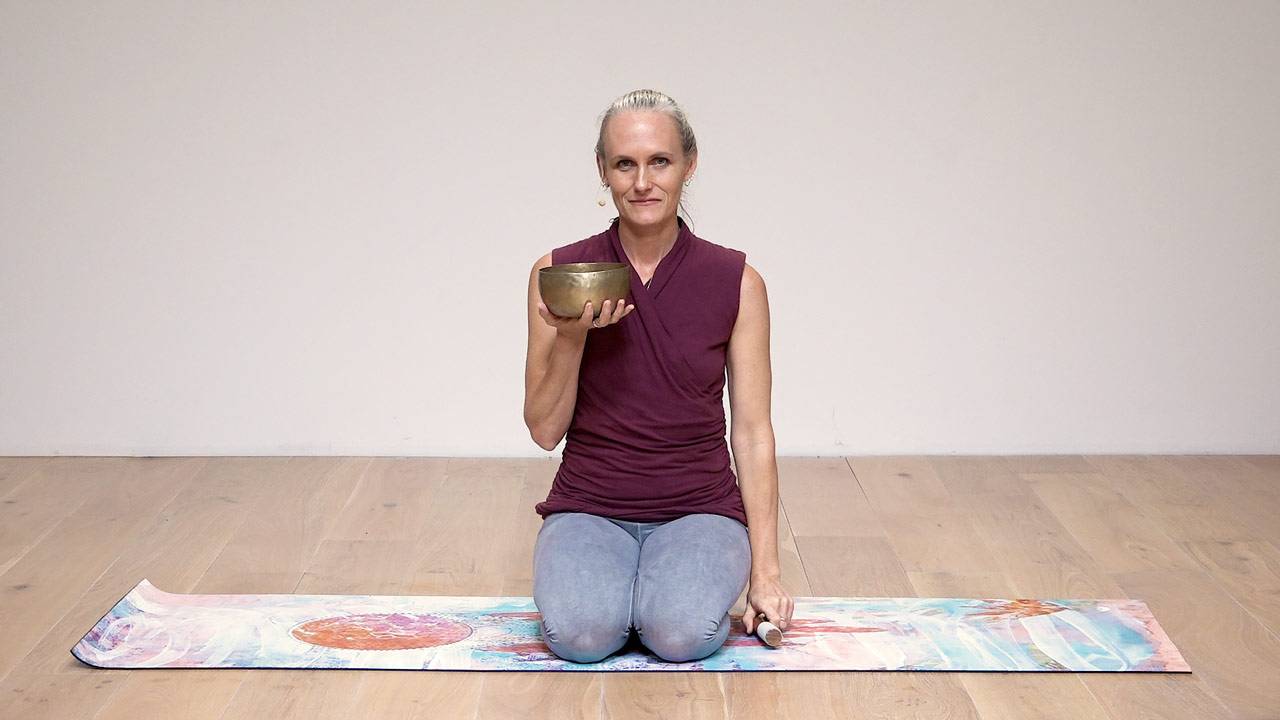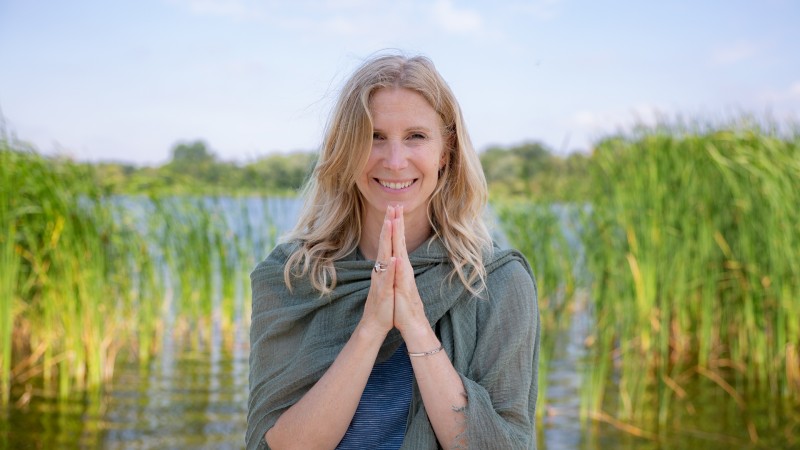Most of us know that meditation is a good thing to do. The health benefits are immense and if we meditate for just a few minutes every day, we can become calmer, clearer, more focused and more relaxed in all areas of our lives.
But despite being aware of the benefits, many people still believe that they can’t meditate. Some of the biggest mental hurdles for people are:
- I can’t sit still
- My thoughts won’t stop
- I feel like I am failing/bad at it
- I should be doing something instead of just sitting here doing nothing
If would like to start a meditation practice but think you won’t be able to, here are a few tips to help you ease into a practice that is gentle and suitable for even the most restless minds.
Top tips for meditating
1. Start by meditating for 1 minute
You can do anything for 1 minute. The next day, add another minute, then another…Though it may seem otherwise, the truth is, you CAN be still. It’s just that your mind does not want to be present, so it makes up every single excuse possible to make you feel like you can’t do it: “I have too much to do.” “This is a waste of time when I could be doing something.”
By focusing your attention on something other than how much you don’t want to sit and be still, the stillness gradually arises within your attention. If you are just starting out and really, truly cannot sit still, try a walking meditation instead.
Try it now!
This short meditation using sound vibration demonstrates how quickly we can bring our mind from a distracted state and into a one-pointed focus.
2. Are you sitting comfortably?
Make sure you are sitting in a way that is not painful or straining your joints or back. Sit in a chair or against a wall. Prop yourself up with pillows. Lie down, if absolutely necessary (but try not to fall asleep).
3. Relax and be thankful
I always start my meditations with a deep exhale and surrender into the sense of gratitude for simply being able to stop for a few minutes in the midst of a chaotic world. I’m grateful both for the ability to be busy and for the ability to be still for a few minutes.
4. Begin by saying “thank you”
You don’t have to be thankful for anything in particular. For example, it might be just a general ‘thank you’ for the ability to live in this moment, with whatever this moment holds. Calm mind/busy mind, happy/unhappy, pleasant/unpleasant… This gratitude is not only for WHAT you experience, but that you CAN experience all of it.
5. Leave your thoughts be
This is a big one. There is no need to try to stop your thoughts – you absolutely won’t be able to! And the more you try, the more frustrated you will get. So just let them come. Sometimes you will get totally carried away in thought, and other times you will notice when thoughts arise and then choose not to give them your attention. Both are okay.
If your thoughts are whirling:
– Ask yourself every few minutes, ‘Where is my attention right now?‘
You may be amazed at the answer to that question! Maybe your attention is in the midst of a huge to-do list, or planning secret revenge on someone who hurt your feelings, or remembering a fond time in your life. Wherever your attention is resting, notice it. And then watch what happens. Does your mind stay in that story? Or does it return to a baseline of stillness, or does something else happen?
By simply asking this yourself this question over and over again and noticing the answer, you can start to see a pattern in the activity of the mind. You’ll start to notice where the mind goes when given the freedom to roam freely, and most importantly, you can see if the thoughts/stories are useful in your own evolution, the evolution of those around you, and the evolution of all beings.
– Try writing down all the things in your mind for 3-5 minutes.
You may be surprised what comes out! In this way, though, you ‘dump the stuff’ (or at least some of it) that is cluttering up your mind, and make a bit more space for presence.
After the 3-5 minutes, put the pen and paper aside – you never have to look at it again if you don’t want to – and begin your meditation.
6. Know that you can’t fail
There is no way to fail or be bad at meditation, unless you just don’t meditate at all. The common misconception about meditation is that it is supposed to always be blissful and peaceful. This is hardly ever the case when we begin meditating. The first stages of meditation are about simply sitting and being with everything you experience while sitting there, no matter how comfortable or uncomfortable it may be.
7. Welcome it all – sit gently with it
Welcome everything that arises in you as if it was a guest at the party of your experience. The urge to get up and check your phone? Sit gently with it. That huge list of jobs you feel you should be doing right now? Sit gently with it. The song from the 90’s that you just can’t get out of your head? Sit gently with it. Watch how these urges arise and gain momentum as you give them your attention. Simply noticing this can reduce the power they have over you.
Eventually (maybe even after a few years of practice) all of those urges and thoughts become like a television on in the back of the room: they chatter on and on while a deeper part of you rests in the sense of stillness that is behind all those thoughts and urges.
8. Consider yourself as the space in which Life happens
Meditation is a gateway that reveals to us how Life displays itself through us and all of our experiences. Not just the blissful experiences, but also the most terribly painful: they are Life. The busy mind and the calm mind: both Life. The ability to sit quietly for hours without disturbance, and the frustration of trying to sit still for 5 whole minutes: also Life. There is nothing we experience at any time that is not part of Life’s grand display.
There is nothing we experience at any time that is not part of Life’s grand display.
The practice of meditation is a path that leads to the knowing of deep stillness, out of which everything arises and eventually dissolves. It takes dedication, time, patience, and practice for the mind and body to settle enough for this stillness and all that is held within it to reveal itself within awareness.
Be kind and gentle with yourself. Keep a sense of humour. Simply show up for meditation for a little time each day, with openness. And just see what unfolds in the process!
Love,
Tracey.
9. Bonus tip! – Put these meditation tips into practice with this guided program
A 10-day online meditation course with Esther Ekhart to help you develop an embodied mindfulness meditation practice.
Related
- 5 myths about meditation
- Journal meditation – Listening to your life through the practice of writing



